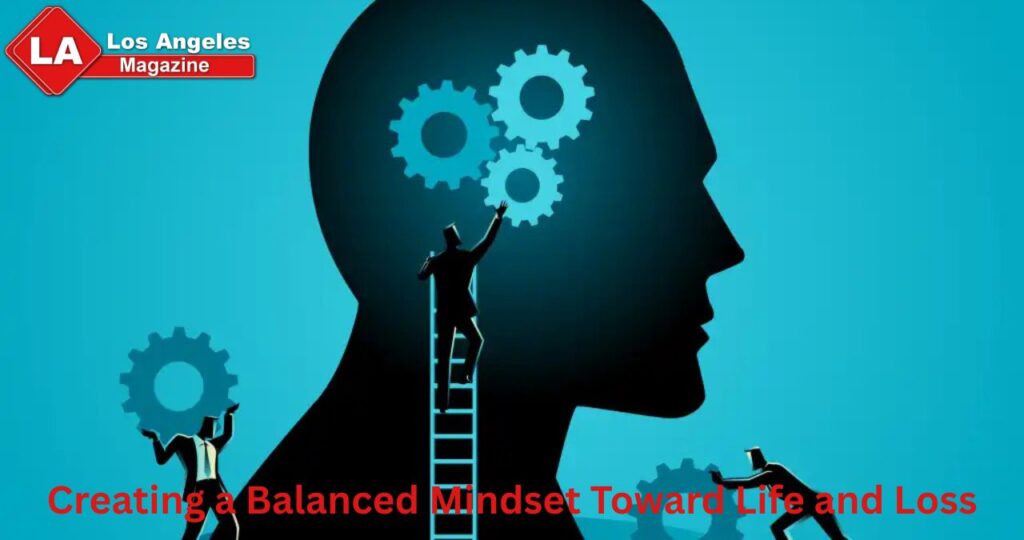Life moves at an astonishing pace. With the proliferation of digital platforms, constant notifications, algorithmic timelines, and pressure to always be “on,” it’s easy to become consumed by urgency and external noise. For readers of platforms like MassPlanner, where productivity, automation, and efficiency are key topics, it becomes even more essential to occasionally pause and reflect on the inner world—on mental equilibrium, the inevitability of change, and the deeper undercurrents of life and loss.
Cultivating a balanced mindset isn’t about achieving perfect calm or detachment. Instead, it’s about learning to coexist with emotional and psychological waves, embracing discomfort, and seeing loss not as an interruption but as an integral part of the human experience. In the same way digital marketers fine-tune their social strategy, analytics, and engagement metrics, emotional wellbeing also needs intentional tweaking and thoughtful recalibration.
This article explores the mindset that can help you navigate both life’s everyday pressures and its deeper, more personal losses, without spiraling into anxiety or detachment.
Rituals of Meaning and Healing
Creating a balanced mindset involves intentionally building rituals that honor both joy and sorrow. Just as you might create systems to streamline your workflow—templates, automation tools, scheduling platforms—you can create rituals that help you process loss and ground your energy.
These rituals don’t have to be spiritual or elaborate. They might include morning journaling, daily walks without devices, creating art, cooking a favorite recipe, or even digital detox weekends. The goal is to carve out intentional time to reconnect with yourself.
One such ritual could be honoring the memory of someone you’ve lost in a way that’s deeply personal. This could include setting up a digital archive of their memories or planning ahead for their legacy. Many people use tools like direct cremations to make arrangements that reflect their values and offer peace of mind to their loved ones.
When loss is acknowledged in this thoughtful, structured way, it becomes less intimidating. It integrates into life as something that can coexist with happiness, success, and forward motion.
The Illusion of Control
As marketers and digital entrepreneurs, there’s a tendency to associate success with meticulous planning and controlled outcomes. Traffic goals, conversion metrics, content calendars—all are created with a strong sense of order. But life doesn’t always cooperate with these structures.
The same way Google’s algorithm updates can derail a well-planned SEO strategy, life throws us emotional updates without warning. The loss of a loved one, the sudden end of a relationship, or the realization that a lifelong dream may no longer be viable—these are deeply human moments that disrupt our internal systems. To respond with rigidity—trying to suppress, deny, or over-optimize emotions—only deepens the impact.
Instead, we can choose to meet those moments with curiosity. What is this discomfort trying to teach me? Is there value in this stillness? What emotions am I avoiding in my rush to “move on”? These questions open doors to inner resilience and emotional depth.
The Power of Acceptance
A big part of creating a balanced mindset involves embracing acceptance—not as resignation but as clarity. Acceptance doesn’t mean liking what’s happened or giving up on improvement. It means being real with where things are right now.
Let’s say your startup campaign fails despite months of preparation. You might default to immediate problem-solving mode: analyze the copy, revisit the ad spend, tweak your targeting. That’s a smart response for your business. But when the “campaign” is personal—like grieving a loss or facing a deep sense of disconnection—analytical thinking won’t suffice.
There is no spreadsheet or funnel that can map the stages of grief. No automation tool will rush emotional processing. Acceptance here looks like allowing the heartbreak to exist. Letting the tears fall. Understanding that some questions may not have satisfying answers. And realizing that healing is nonlinear.
What this does is remove the pressure to “get over it” quickly. It shifts the goal from fixing pain to holding space for it. And ironically, this gentle space is where emotional resilience grows the most.
Letting Go of False Positivity
The self-improvement culture often promotes a kind of relentless optimism: think positive, manifest success, turn every obstacle into an opportunity. While there’s value in optimism, unbalanced positivity can become toxic. It invalidates real struggles and shames people for feeling anything less than inspired.
For people engaged with platforms like MassPlanner, where progress is often measured in numbers—follower growth, engagement rate, monetization—there’s a temptation to treat emotions like another KPI. But feelings don’t function on metrics.
It’s okay to feel depleted after a tough season. It’s okay to acknowledge anxiety, sadness, or fear without immediately reframing them. Denying these feelings doesn’t make them go away; it just drives them underground, where they may manifest in unhealthy ways—like burnout, irritability, or emotional withdrawal.
A balanced mindset allows duality. You can feel grateful for what you have while mourning what you’ve lost. You can celebrate your success while still feeling lonely. You can be both productive and vulnerable. This is the nuance that creates emotional maturity.
Embracing Stillness in a Hyper-Productive Culture
One of the biggest challenges in achieving balance is the cultural pressure to always be doing. For those managing digital campaigns, crafting content calendars, or building audiences, inactivity can feel like falling behind. Stillness feels counterproductive.
But true balance often emerges from that very stillness.
Moments of quiet aren’t empty; they’re restorative. They allow ideas to incubate. They offer space for subconscious healing. When facing grief or significant loss, giving yourself permission to do nothing is not laziness—it’s self-preservation.
This pause isn’t just for recovery; it also creates the mental bandwidth needed for deeper creativity and strategic insight. Stepping away from the noise occasionally can renew your perspective and give your ideas room to breathe.
If you’re worried about momentum loss, think of it this way: the digital landscape is always on, but you don’t have to be. The quality of your output improves when your internal world is regulated. The next post, campaign, or launch will land better if it’s created from a grounded place rather than a frantic one.
Redefining Strength
In a world that celebrates hustle and endurance, strength is often equated with suppression. But strength isn’t about hiding pain or forcing forward motion. True strength is the courage to slow down when needed, to ask for help when overwhelmed, and to allow emotions to exist without self-judgment.
If you’ve ever managed a campaign that failed publicly or experienced loss behind the scenes while your online presence remained upbeat, you understand this duality. The gap between your inner world and outer projection can feel disorienting.
Balancing life and loss means bringing those two realities into harmony—not making them identical, but ensuring they don’t contradict each other. It means honoring your pain in private while still showing up when you’re ready, in a way that aligns with your truth.
There’s also strength in vulnerability. Sharing your struggles—selectively and appropriately—can humanize your brand and deepen your connection with your audience. Authenticity is not just a buzzword; it’s the bridge between content and community.
Reconnection and Purpose
Loss has a way of reordering priorities. It exposes what matters and what doesn’t. In digital marketing, we often chase clicks, reach, and impressions. But the pain of loss reminds us that the most lasting impact is emotional, not numerical.
A balanced mindset means realigning with this deeper purpose. Why do you create? Who do you serve? What legacy are you building—not just in your career, but in your relationships, your community, your personal evolution?
Even the most data-driven marketer eventually reaches a point where metrics alone aren’t enough. Meaning matters. And often, it’s through periods of grief or reflection that we reconnect with our “why.”
That might mean shifting your content focus. Launching projects that resonate on a heart level. Saying no to brand deals that don’t align. Prioritizing time with people over relentless scaling.
You don’t have to wait for a crisis to make these shifts. The more you build your life on values that hold up in both success and sorrow, the more balanced you’ll feel when life tilts unexpectedly.
The Ongoing Journey
Balance isn’t a final destination. It’s not something you “achieve” and then forget. It’s a daily recalibration—especially in a world where both opportunity and tragedy can show up unannounced.
For the productivity-driven, results-oriented audience of MassPlanner, this may seem counterintuitive. But just as you wouldn’t run campaigns without A/B testing, feedback loops, and performance reviews, your emotional life needs similar touchpoints.
Ask yourself: How am I feeling today, really? What am I carrying emotionally that needs attention? What’s one small act of kindness I can extend—to myself or someone else?
Creating a balanced mindset toward life and loss means moving through the world with intentional softness. It means being brave enough to feel, wise enough to pause, and grounded enough to stay present through it all.
The data will always be there. The dashboards will refresh. But your internal ecosystem—your mind, heart, and soul—needs your presence more than your productivity. Take the time. Hold space for both the wins and the wounds.
In doing so, you don’t just build a better mindset—you build a richer, more meaningful life.



